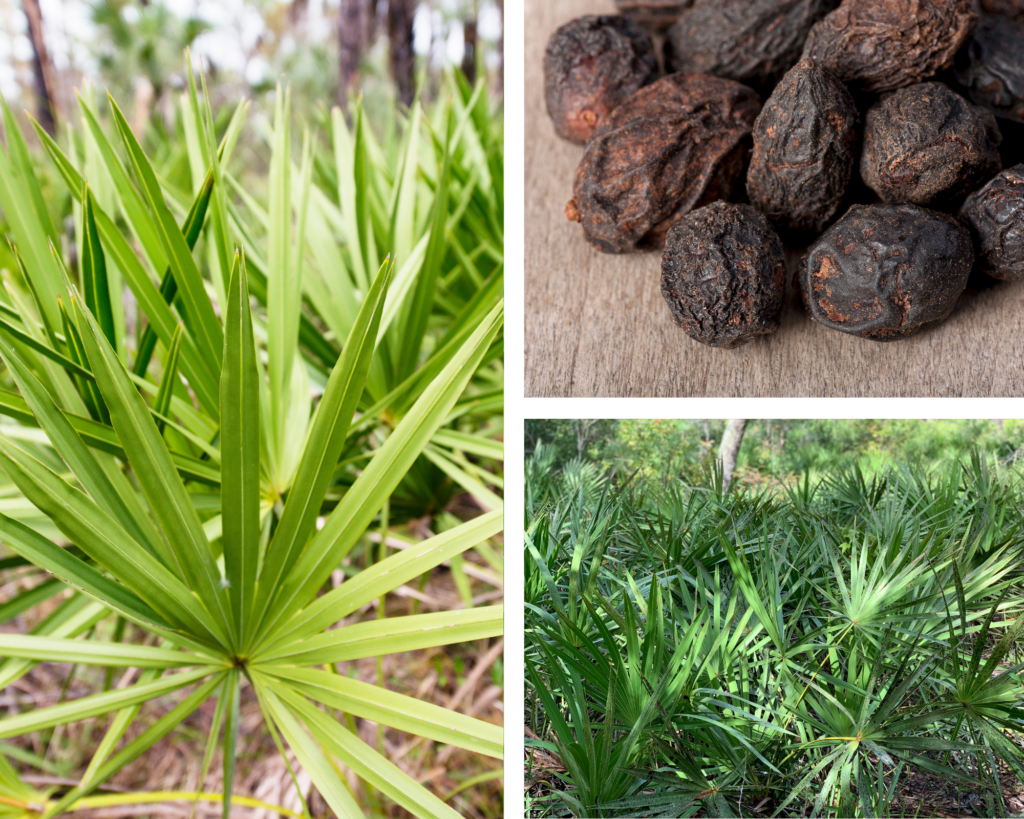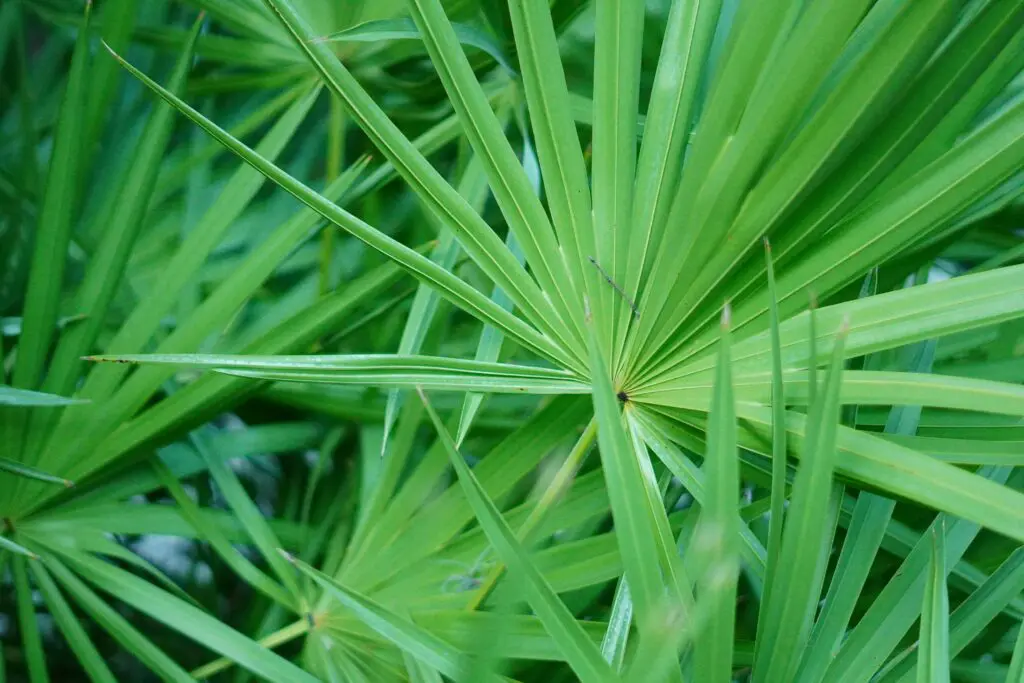Serenoa repens
Latin Name: Serenoa repens
Herb Class/Action: Alternative, anti-inflammatory, anti-spasmodic, aphrodisiac, expectorant, diuretic, reproductive tonic
Parts Used: fruits
Flavors: pungent, bitter, mildly sweet
Energetics: warming, drying
Traditional Benefits: urinary system support, reproductive health support, hormone support
As a reproductive and urinary tonic, Saw Palmetto is a nurturing ally in balancing out hormonal irregularities for people of all genders.
Also known as Dwarf Palm or Sabal Palm, Saw Palmetto is a member of the palm family (Arecaceae) and is native to the tropical environments of the South Atlantic coast of the United States. This low growing palm only gets about 3-9 feet tall but has striking fan-shaped fronds that give it its iconic look.
Traditionally, Saw Palmetto was used by Native Americans as a diuretic, to improve prostate issues and for infertility as Saw Palmetto has an affinity for the reproductive and urinary systems. Most scientific literature on this native palm has historically been focused on men’s health, especially as a treatment for benign enlargement of the prostate gland. In the more recent years, randomized controlled trials have explored the benefits of Saw Palmetto on hormonal conditions in women. And that’s what we love it for!

The medicine of the Saw Palmetto plant really lies in its potent, olive-sized berries. Each berry is high in volatile oils, most of which are free fatty acids and ethyl esters of fatty acids, called lipoesterols. These small but mighty compounds are responsible for inhibiting 5 alpha reductase (5AR) – the enzyme that converts testosterone into its most active and aggressive form, dihydrotestosterone. Women with polycystic ovary syndrome (PCOS) typically have overactive 5AR, causing unchecked androgen levels and symptoms associated with high androgens, like hirsutism (excessive hair growth). Therefore, this particular mechanism of action is what makes Saw Palmetto berries so supportive for women with PCOS as it helps to lower the uptake of androgens like testosterone, dihydrotestosterone and DHEA by the cells by up to 40%.
Indigenous cultures consider Saw Palmetto to be an aphrodisiac tonic, mirroring its modern day use in Western medicine as a regenerative herb for atrophied sexual organs and deep reproductive support.

